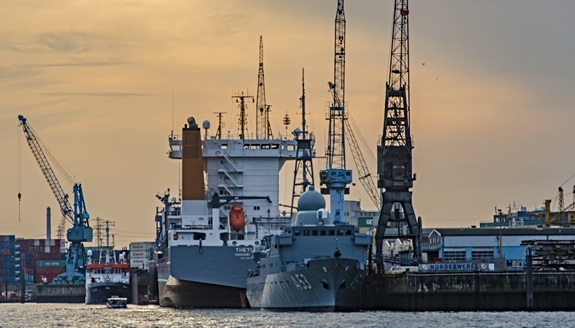
Marine transport is the backbone of international trade, moving almost 90% of all commodities globally.
As such, the infrastructure assisting this industry must be strong and resilient to various issues, such as natural calamities, climate change, and expanding operational requirements.
This paper looks at the key components of creating a robust infrastructure for the maritime sector and the creative fixes used to guarantee its robustness and longevity.
The importance of resilient maritime infrastructure
Resilient maritime infrastructure is essential for maintaining the environment’s preservation, people’s safety, and the seamless operation of shipping operations.
Harsh conditions, like strong storms, increasing sea levels, and substantial wear and tear from frequent use, can affect ports, harbours, and coastal structures.
Investing in high-tech engineering solutions and long-lasting materials is essential to reducing these hazards.
One such material is offered by businesses like JP Concrete, known for their robust and long-lasting goods that are perfect for building marine constructions that can survive adverse weather.
Advanced engineering and design techniques
Modern engineering and design techniques must be used to make maritime infrastructure more resilient.
One such tactic is using advanced modelling and simulation techniques to forecast how structures would react to different stresses.
These technological advancements aid in optimising designs for optimal security and durability.
Furthermore, real-time data collecting and analysis made possible by integrating smart technologies—such as sensors and monitoring systems—allows proactive maintenance and the early detection of possible issues.
Sustainable construction practices
Sustainability is a crucial factor when building robust maritime infrastructure.
In addition to lessening the influence on the environment, using eco-friendly materials and techniques prolongs the life of the structures.
Energy-efficient building techniques and recycled materials can greatly reduce the carbon footprint.
Furthermore, long-term resilience depends on building infrastructure that can adjust to shifting environmental factors like increasing sea levels and more frequent storms.
Case studies of resilient maritime projects
Several notable projects demonstrate the implementation of resilient marine infrastructure worldwide.
In 2016, the Panama Canal was extended to handle larger vessels and seismic activity, constructing additional locks using high-performance concrete and cutting-edge engineering.
Similarly, the Port of Rotterdam uses automated technologies and floating structures to improve flooding resistance and efficiency.
Challenges and future directions
The maritime sector struggles to build and maintain resilient infrastructure despite progress.
Changes in environmental, economic, and regulatory issues require ongoing innovation and adaptability.
Governments, business stakeholders, and academic institutions must collaborate more to create and deploy cutting-edge technology and best practices.
Education and training must also foster resilience to prepare the next generation of marine professionals to solve these issues.
Conclusion
Developing robust infrastructure for the maritime sector is a difficult but necessary task.
By utilising cutting-edge engineering methods, eco-friendly procedures, and cutting-edge materials, the sector can guarantee the durability and effectiveness of its vital infrastructure.
The significance of robust maritime infrastructure will only increase as international trade and environmental concerns grow.
The marine industry can overcome these obstacles and ensure a prosperous international trade and commerce future by working together and committing to constant improvement.
(Pic by Pexels.com)


















Recent Comments